Adelaide-bred photographer and actor Johnny Diaz Nicolaidis has worked across the photography industry both at home and abroad. His work is informed by a strong theatrical background and a drive to initiate discussions. This morning FIB got the chance to sit down with Johnny for an exclusive interview.

You’ve worked in Los Angeles and New York as well as Sydney. Is the industry different between the three places?
The industry in Sydney can be very small and the circle of people that they use can be quite limited. In all cities you have to earn your stripes, but I find that in Australia, sometimes going abroad really helps you back here. Whereas in America, I find that they are more willing to look for the next big thing. They’re willing to take a chance and it was more about the content. But the industries as such are obviously very similar… obviously America is more cutthroat but it’s all relative.
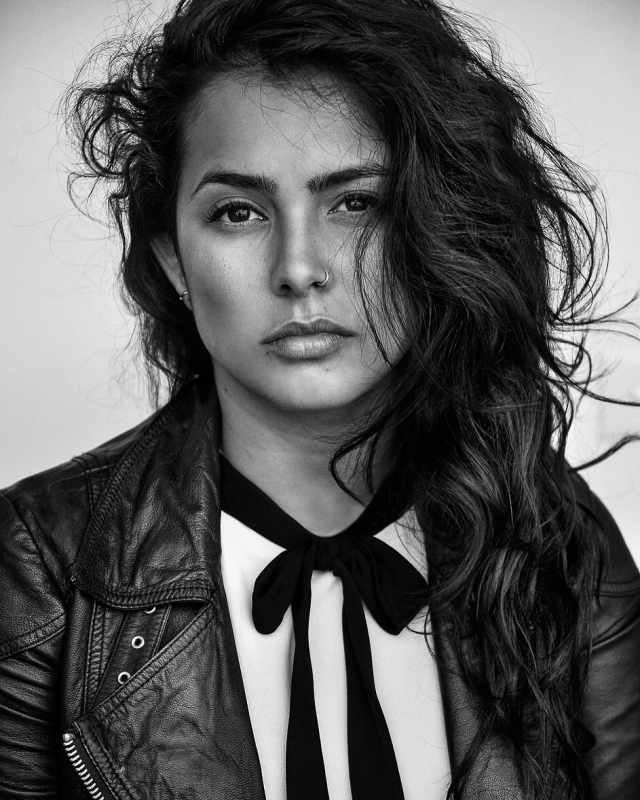
How and when did you decide to become a professional photographer?
I first held a camera when I was five. My mum was a photographer, and in a way she would always use me as a subject. And then I started taking photos of her. And they were very Marilyn Monroe-style glamorous, you know, a fur coat behind her curtain, stuff like that. But then I think it was in year nine in high school when we had to do an assignment [and] you had to really excel and push yourself with whatever field you wanted to do. We were studying To Kill a Mockingbird and I remember thinking that I would do this photo series of Boo Radley’s character. I had to go into his mind for the assignment. That doesn’t really answer your question [laughs] but the professional side, I think, would have been about 2009. When I finished drama school and I hadn’t booked an acting job and I panicked… I was being creative every day for three years, with some of the greats. And so it was kind of hard not having that creative release after graduating. I was working at a call centre and I would always be on Tumblr when I was doing these calls and I remember thinking, ‘I could do that.’ And it looked like directing, these shoots that I was drawn to. And I thought, ‘I should just try it.’ So I just started a blog. And then another actor asked me to take some photos of them, and I said, ‘yeah, I’ll do it for fifty bucks.’
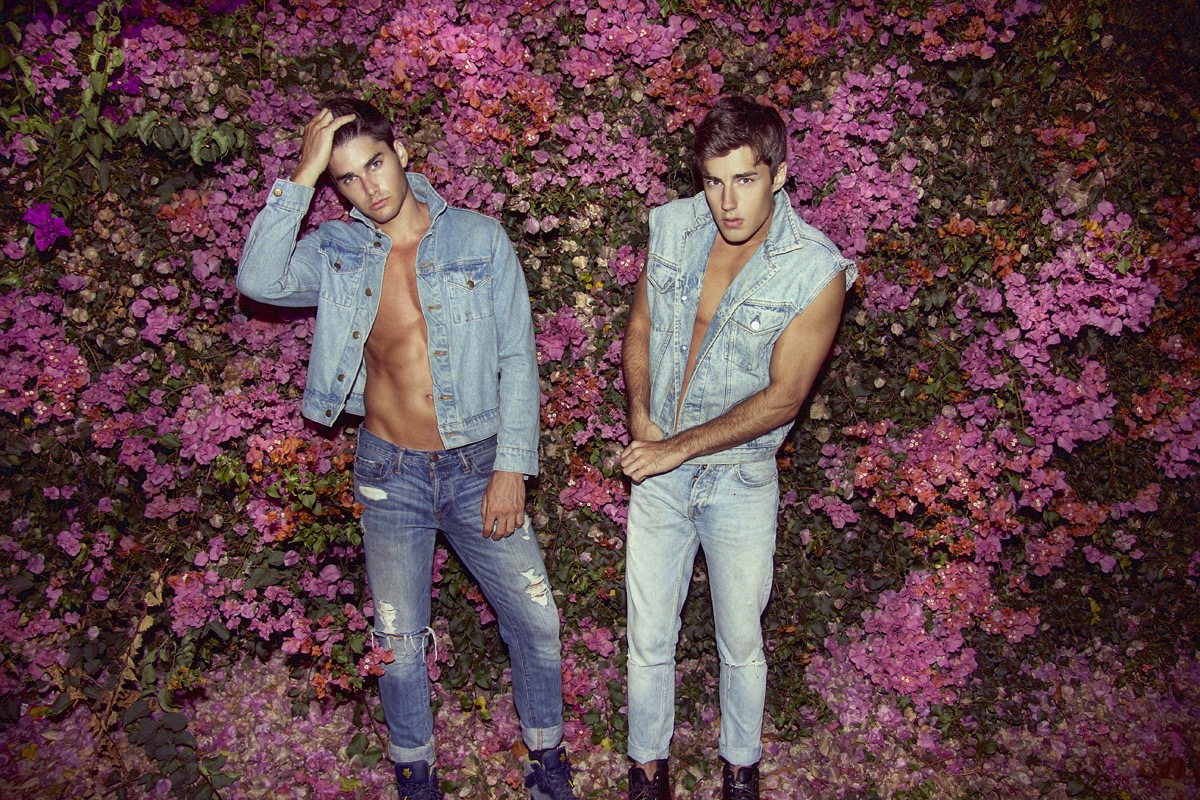
Where do you find inspiration?
I find inspiration in music and I think that really feeds my imagination, but then I find that sometimes it can cut me off from the world. Sometimes when I’m walking, I find it in my surroundings. I find it in confined spaces because then I’m forced to imagine another world or another extension of that.
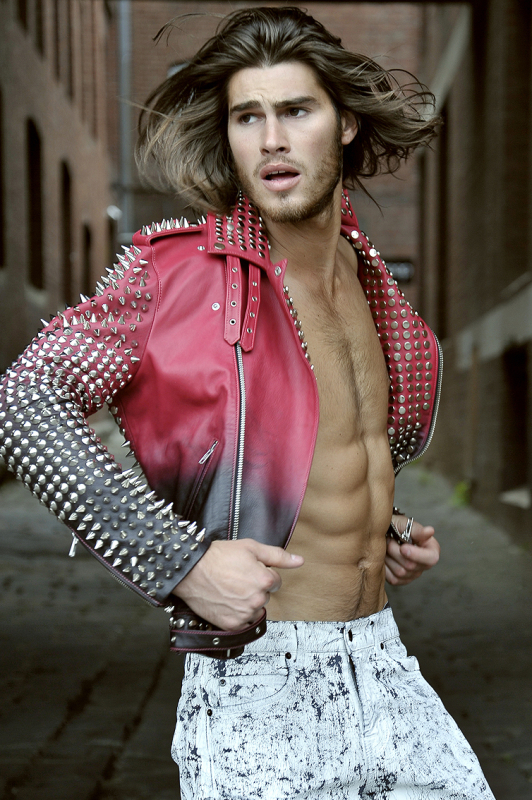
What are your five dream locations to shoot?
Ooh… what if I’ve already been there? [Laughs] I love shooting in New York City, as a lot of people do – it’s the energy there. But dream locations… I really want to go to Alaska and I want to go to Paris, Cuba… and Africa – like the Congo. I love the jungle.
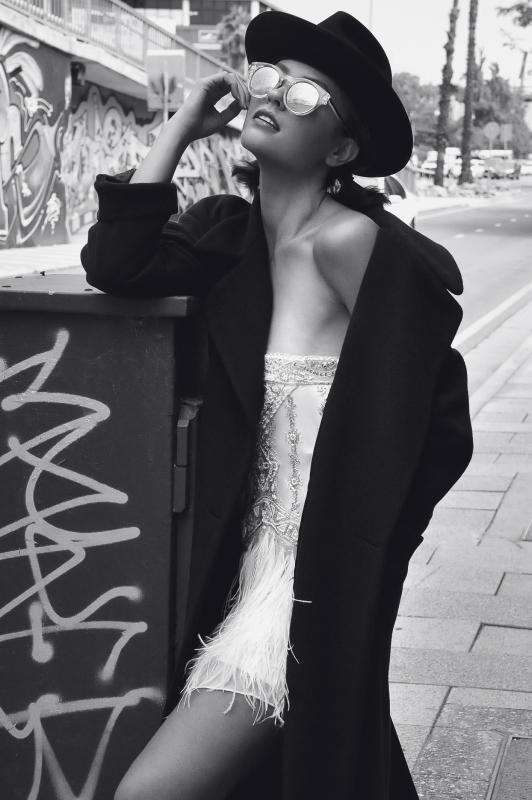
“If you want to do something wholeheartedly, you’ve got to go right back. You want to know everything about it.”
Digital media has changed a lot about photography and its practice and accessibility. What are your thoughts on the evolution of the industry and how does it impact your work?
I think it’s like a new wave. We just have to accept it. Of course, the greats, the ones before us, they didn’t have those options as such. But then again, you look at someone like Leonardo da Vinci – do you think that Mona Lisa looked like that? He’s obviously retouched her in a way. So it’s not a new thing. But I think there’s going to be something that we’re going to be using and then, is this going to be considered old school?
Sometimes I take a photo knowing what I’m going to do in post. So I think it’s now an extension rather than a cheat.
But sometimes I wish it was more of an authentic process in terms of getting certain grains and developing in the dark room – I don’t know how to do that. But it’s something I would love to do. If you want to do something wholeheartedly, you’ve got to go right back. You want to know everything about it… whether you’re a dancer, an actor or anything.

What is your relationship with social media platforms?
I have a love-hate relationship, as most people do. You know… how can followers define if you’re a good photographer or not? And that upsets me; it frustrates me. And I know that a lot of photographers chase it. I think they work really hard to get that – that really good post, that really good like, that number of followers because it might help them… but then it frustrates me because it’s like, why aren’t you putting that into your art or into the message, the concept, or a comment about what’s going on right now? That’s going to stand the test of time, not that post.
I used to be really obsessed with [social media] when it first came out and I’m trying to wean myself off of it. I wish I could delete but I find it does generate work, unfortunately, because it’s like a little portfolio. But yeah, at the moment I’m hating it.

How would you describe your photographic style?
I think it’s quite clean right now. And it’s very driven by unsuspected beauty. It’s going into more of my original roots, which were a bit darker. It was going a bit light and pretty. I’m trying to bring back the masculine edge.
What are some of your career highlights?
I was invited as a guest speaker at the National Portrait Prize in Canberra. It was a highlight as it was, but when I realised that the predecessors of the Guest Speaker were Mia Wasikowska and Geoffrey Rush, I thought, ‘okay, this is kind of cool.’ So I probably will be submitting an entry there this year. I think I’ve found the portrait, finally. For two years I’ve been waiting to do it. And it kind of hit me. So that was really great.
Another career highlight was having my first cover. I think that was something that was pretty crazy. It had an accompanying article and I think it was really wonderful that I was able to write, because that’s what I originally studied, before acting and before photography. So that was lovely.
And finally… being nominated for a Spirit of Youth Award in photography. That was cool. I was in New York at the time. It was just kind of that validation that I needed… because I am an actor and everyone would [think], ‘oh, you’re just a failed actor, that’s why you’re doing photography…’ it wasn’t said. [But] that was the story I told myself. [Laughs] It just felt like a bit of credibility that really I didn’t need – I should’ve just believed in myself – but it was lovely to get that.
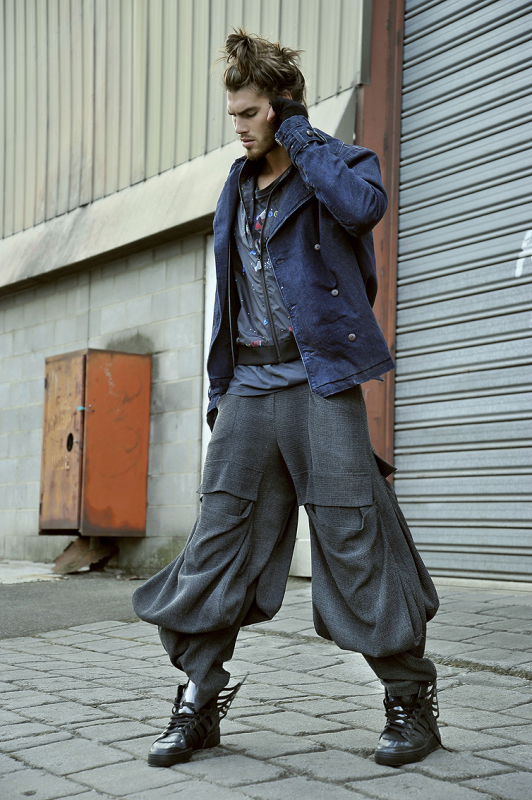
“No matter what photograph you do, you don’t know who it’s going to affect. You don’t know how powerful it is.”
Have there been any career low points?
Oh, yeah. I’m the Creative Director of Hijab House, which is a fashion label for Muslim women and I found when I did that first shoot it was quite… I guess, controversial, because I was photographing Muslim women in pants. It was by no means provocative but there were a lot of negative comments and threats. And just recently, I was shooting street style and there was a police raid… I was with three Muslim women and they thought it was an ISIS attack. Like, these are floral prints [that the models were wearing]. It was in The Australian. These are floral prints and there was a squad car that interrogated us. They were very threatening. That scared me, but it really invigorated me because I thought, you know, no matter what photograph you do, you don’t know who it’s going to affect. You don’t know how powerful it is. So that shoot was a really good one for us.
Who are some of your favourite photographers and what do you admire about them?
I love Cindy Sherman. What I love about her is how it’s very conceptual, there’s a very strong narrative. And similarly with Tim Walker. Do you like Tim Walker?
I: Yeah. But I don’t know much about him.
I don’t know much about him either but I feel like I don’t need to… I feel like I look at his photos and I get this piece of him. Same with Cindy. But again, he takes us to another world that’s out of this world. Every photo is like, wow, where did that come from? And finally, I do love Nick Knight. And similarly I think [his work] is just kind of… it’s darkness but beauty. He really marries them together quite beautifully.
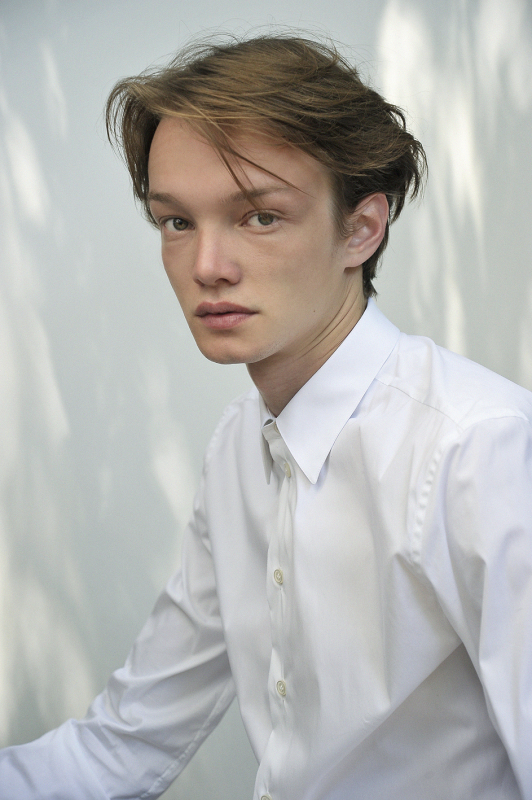
What do you aim to achieve with your photography?
I’m starting a new book, my first book, at the moment. It’s called ‘Beauty in the Breakdown’. I won’t tell you what the concept is yet but… I want to start creating discussions, rather than just do beauty. That’s quite a big thing for me. There are also these small things, like certain editorials that I grew up reading that I would love to one day be in. Also, I would like my photography to extend into music videos and fashion film, because I’m from an acting background and I want to marry those all together. I think that’s something that maybe not everyone has – the genuine theatrical background.
“Now I’m at that level where if I have an idea, I know what to do.”
Is there a particular photograph that you’re most proud of?
Yeah, there is and I literally just took it the other day. I was never comfortable with studio lighting because I was always about natural light, all the way. So I hired a studio recently with lights and I just practised all night – just until I was comfortable. And I had this idea for a shoot with an actor who, I remember when I first saw him, the image came to me. So I took it and it was a series, and I just – I was so proud. I’ve looked at it every night and just thought, ‘you did it.’ it was exactly how I envisioned it. Sometimes I didn’t have the technical skill to execute it 100% in the past but now I’m at that level where if I have an idea, I know what to do. And that’s why it meant so much to me. I’ve shown a few people and they’ve said ‘wow’ too and that was really important to me.
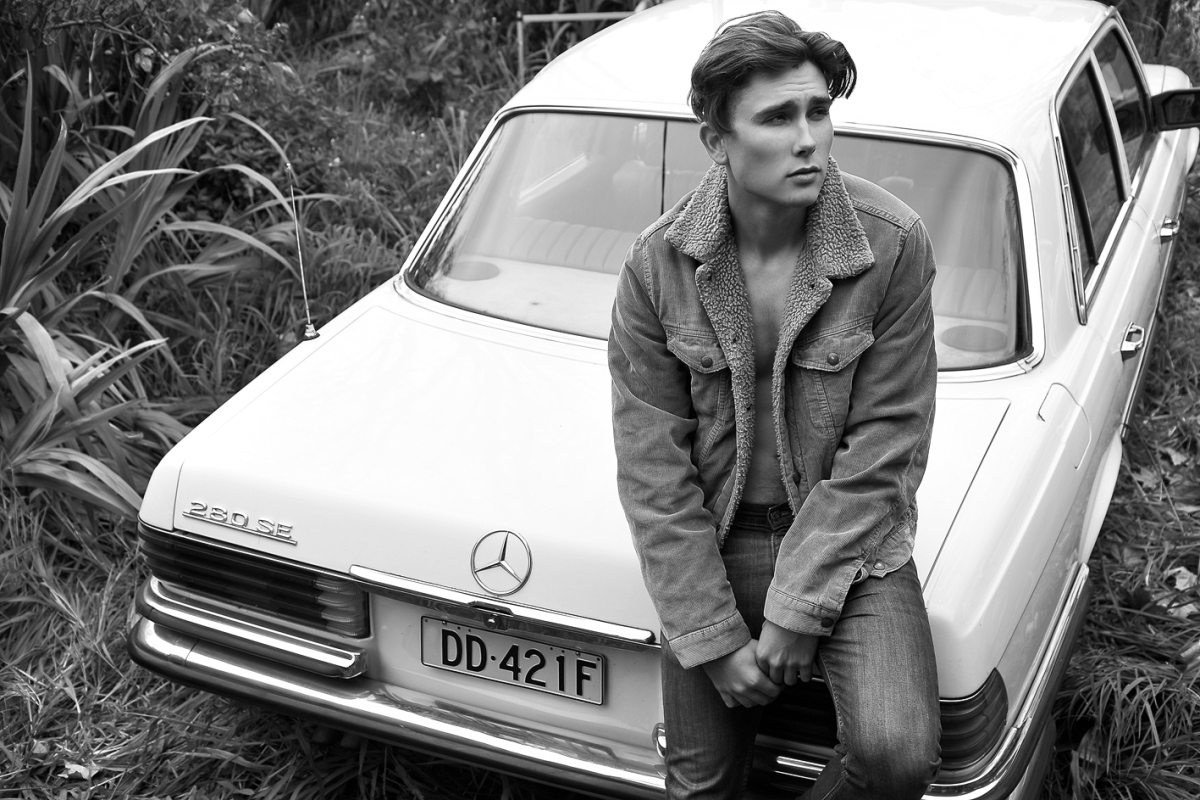
Do you ever experience creative blocks? If so, how do you get through them?
Of course I experience creative blocks. I need to sometimes go away – sometimes leave Sydney. I’m very reclusive. I don’t have a huge [social] circle, so sometimes the reason why I’m in a creative block is because I don’t have human contact. So I need to go out or meet new people and that’s hard for me. (Because) I think just talking to different people; it unlocks different things within me. But sometimes I’ll go to New Zealand or somewhere [with lots of] nature and you can actually hear what’s going on.
Could you tell me a bit about your process?
If I’m doing a project myself, I find I’ll listen to certain music and I’ll just dream. I dream a lot. And then I’ll just fine-tune it. Unfortunately for me, it’s final product first in my mind, so then I have to backtrack and research where it came from. If it’s something about depression or if it’s something about, you know, feminism or something – whatever it is – I then have to research it because you just need to know what it is. You need to have that knowledge. That’s what NIDA taught me: have a backlog of research; know your shit before you put it out there.
The final part of the process [comes after I do a shoot]. I have a little collective crew that I run everything by. That includes a friend who is a creative in America and also London – Tom Howard.
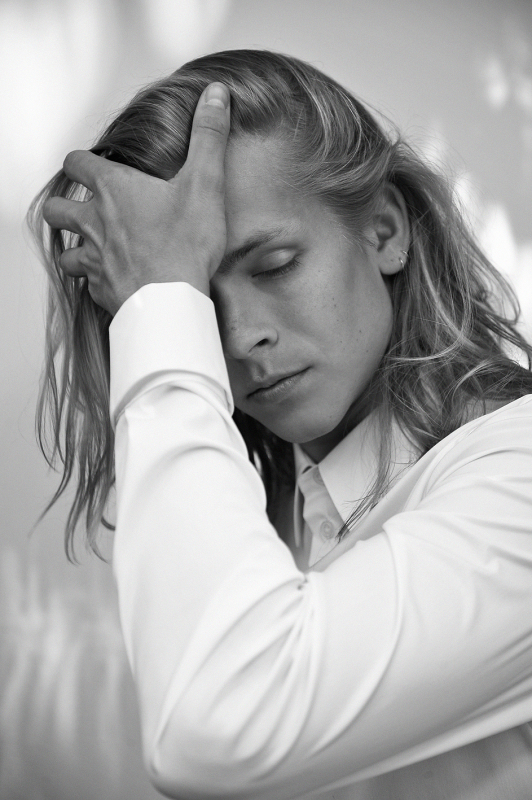
How do you connect with your models during a shoot?
I give them a very strong narrative because I find that not everyone’s Naomi Campbell. She comes at it with her own narrative, which is really great. She talks a lot about that – about how she might just have the direction to step out of a car and she’s got this whole back story of how she came from Cuba with nothing. [Laughs] And it’s great, that’s what I need. So I normally give my models a strong narrative. Who is this woman? Where is she going? I love to give them actions, in terms of… you know, you’re walking into the shop, you’re looking around, even if we’re in a studio. I remember this shoot I did – it was a cover shoot for a South Australian style magazine and I remember that [the model] had this fur coat. I said, you’re in Aspen, you’ve just come into the lodge and she was laughing but we got this really cool shot. She was laughing, she was alive in the eyes because she wasn’t in the studio; she was in Aspen.
How do you choose the perfect setting for a photograph?
I try and walk everywhere. If I’m going outdoors I might grab that inspiration. Or I ask around. When someone takes me somewhere, I always say, ‘take me to your favourite place.’ Because you’re getting a hub. You need to go out, explore and go location scouting. I’m always location scouting.
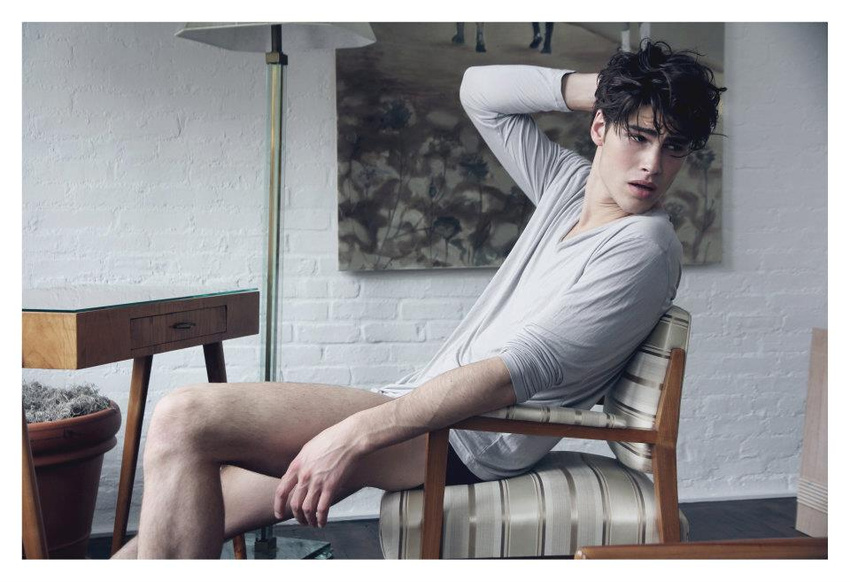
All images © Johnny Diaz Nicolaidis.







